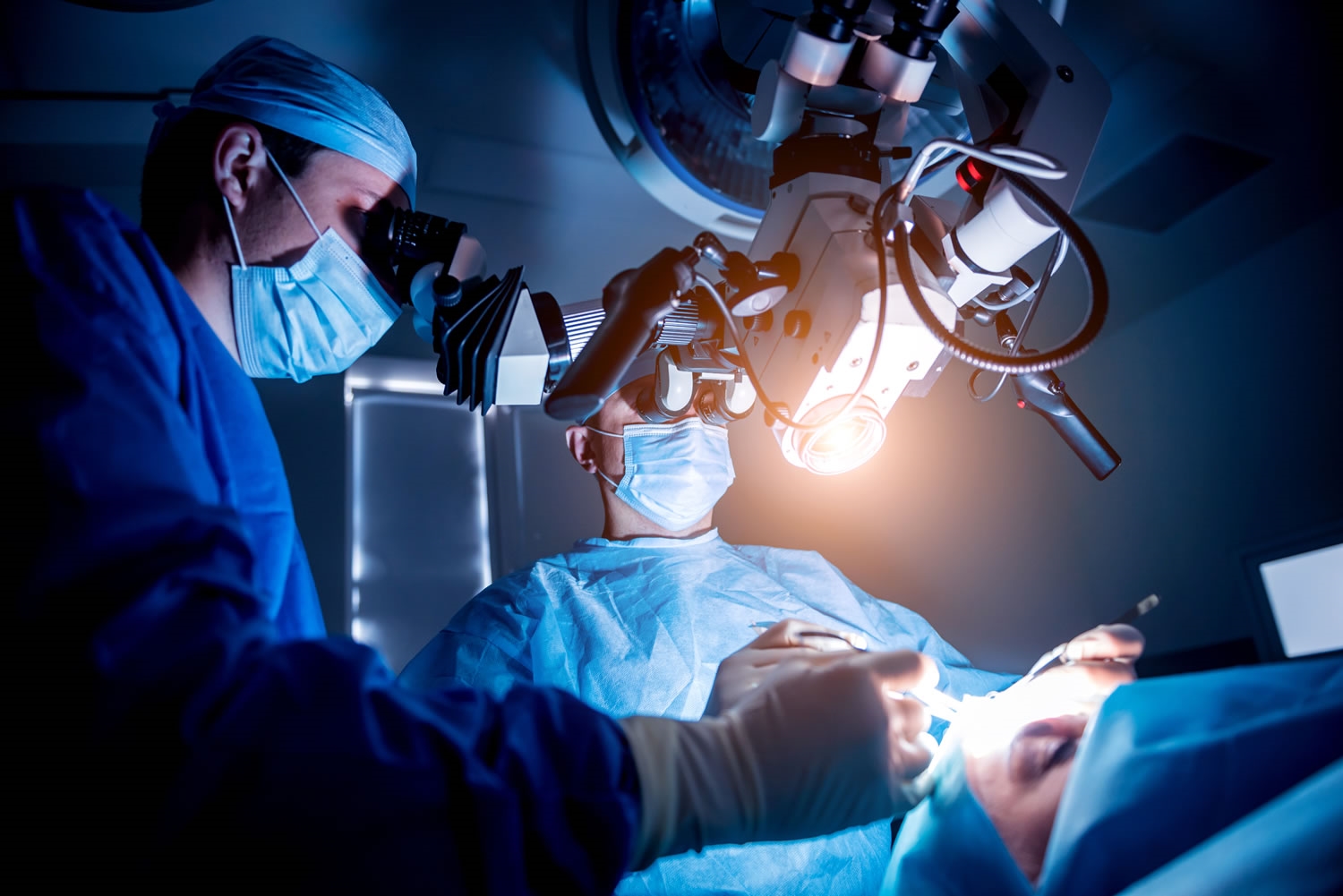Surgical equipment, especially those involved in neurology, interacts with the most sensitive parts of our bodies. The brain and spinal column are closed environments, without the natural ability to cleanse themselves of impurities and intrusions unlike other parts of our body. Therefore, the neurology surgical implements must be exceedingly clean.
There are four types of neurological surgeries that each requires a different toolkit.
- Trigeminal neuralgia (nerve compressions and complications)
- Epilepsy operations
- Neuro-oncology (brain tumors)
- Cerebrovascular (strokes and aneurysms)
The categories of the various surgical equipment fall under the following:
- Cranial sets
- Spinal set
- Drill set
- Bipolar coagulation set
The surgical equipment for such operations and procedures are:
- Bipolar forceps
- Clamps
- Drill bits and dissectors
- Suction tube
- Retractors
- Hooks and probes
- Scalpels and blades
- Trays
- Suture Needles
- Straight needles
- Needle holders
Why Is The Maintenance of Neurology Surgical Equipment Important?
Because of the delicate nature of surgeries, maintenance procedures are strictly followed. Despite high medical service costs and a shrinking budget, such services should never be compromised in terms of quality. Preventive maintenance practices must therefore be implemented to avoid damaging the equipment or endangering human life while still maintaining low operating costs.
To achieve the best results in preventive maintenance practices, well-trained staff and the proper selection of maintenance practices are required. Preventive maintenance is always less expensive and a better option than replacement. When no other options are available, a replacement can be considered.
The other reason to carry out maintenance of neurological surgical equipment is to prevent tissue and blood bioburden. This requires sterilization, and a lack of proper procedures could lead to contamination and to adverse consequences for your patient.
How Is Surgical Equipment Used?
Different surgical equipment serves different purposes when performing a surgical operation, and all of these are based on the intended purpose. Those instruments used in the more invasive procedures require the most stringent sanitation.
Trigeminal Neuralgia
Depending on the doctor's recommendations, trigeminal neuralgia can be treated with medication or invasive surgery. In case of surgery, it entails rhizotomy which blocks pain signals by temporarily damaging nerve fibers. Rhizotomy techniques include balloon compression, glycerol injection, radio frequency thermal lesions, and others.
The next step of the procedure uses anesthesia and insertion is made into the face. The surgical equipment used in this procedure includes, among others, a cannula, surgical scalpel, soft catheter, and kidney tray.
Neuro-Oncology Surgery
Neuro-oncology includes the treatment of brain cancers, which can be primary tumors, brain metastases, or tumors that begin in the skull. The two most common causes of malignancies treated are central nervous system and brain cancer.
In order to access some of the sensitive areas of the skull, the most common procedure is a craniotomy. The surgeon makes an incision with a surgical scalpel blade, then a medical drill to drill into the skull. Once the tumor has been located, either resection or partial removal can be done on the tumor with scalpels or similar tools.
Epilepsy Surgery
Surgery as a form of treatment for epilepsy is taken into consideration when:
- There is a lack of effective results from the medication and the seizures are more frequent and more debilitating. This is also considered when a diet is also not effective in the treatment process.
- When the side effects of the medication are too intense and tend to interfere with one's lifestyle.
Once the necessary tests are carried out to ensure the candidate is fit to undergo surgery then one of several types of surgeries is carried this is either:
- Surgical resection - In this type of surgery a specific part of the brain is removed, and the part of the brain removed is the section that is most associated with the seizures. The types of operations that fall under this category are lesionectomy and lobectomy. Lesionectomy is the removal of lesions such as tumors that have been linked to seizures. Lobectomy on the other hand is the removal of an entire lobe of the brain, temporal lobectomy is the most common mode of treatment of epilepsy.
- Surgical disconnection- This type of surgery involves cutting the connection between the part of the brain that is the origin of the seizures to the rest of the brain In light, of severe seizures, the communication between the right and left hemispheres of the brain is severed. This is done by cutting the corpus callosum.
Cerebro-Vascular Surgery
This is a surgery performed on the blood vessels meant to supply blood to the brain. The surgery is primarily meant to treat stroke, skull-based tumors vertebral compression fractures, and spinal aneurysms. Compared to other forms of neurological surgeries it is considerably less invasive. The types of cerebrovascular surgeries are as follow:
- Endovascular neurosurgery, this procedure is performed to eliminate a blood clot that has previously led to a stroke. this surgery mainly focuses on blood vessels near the surface, and the treatment process is much easier to execute and carry out.
- Open Neurovascular Surgery is similar to endovascular surgery in the sense that it is meant to treat stroke and
Routine Maintenance
The routine maintenance for the various tools used in varied brain surgeries involves the following pre-surgery tasks.
- Using wipes for the surgical needle and the drill to prevent the build-up of blood bioburden.
- Daily maintenance for the kidney tray and the laboratory dish using a solvent cleaning agent. The cleaning solvent would need to have fast-drying properties.
- Storage of the neurological surgical equipment is equally important. The storage environment should be sterile. Most modern facilities have a sterile processing department (SPD) that is designed to handle such operations.
Preventive Maintenance Practices
The preventive maintenance program is meant to reduce the need to replace surgical equipment, which is costly. Preventive maintenance practices for bipolar coagulation set and the spinal set are:
- Manual cleaning. This is the physical cleaning of individual instruments such as the dissector, space retractor, and surgical scissors. The most effective way is to dip them in a tray of solvent. The rate of evaporation should be factored in when selecting the degreaser to ensure no chemical remains at the time of use.
- Use wipes for cleaning and sterilization before storage. They are effective for forceps and surgical scissors; this is slower than dipping but is more effective for the tool.
- The bone drill and the oscillating saw are arguably the most prominent medical equipment used in neurological surgery. Given how crucial they are, they need constant sterilization through a clearly defined maintenance schedule. The maintenance process involves either high-pressure steaming or regular precision cleaning solvent application.
High Precision Cleaners
Coventry™ is known globally for solving the most critical precision cleaning challenges. Coventry has a wide variety of cleanroom swabs and wipes to meet your most demanding applications. The wrapped swab, uniquely designed with no seams or edges, prevents scratching of delicate surfaces. Also included in the product line are sealed fabric, sealed foam, and static control.
Coventry cleanroom wipes keep contamination out of your process and perform consistently, from shipment to shipment. To manufacture Coventry wipes, we start with engineered clean materials. Polyester materials are laundered first in our Class 10 (ISO Class 4) cleanroom
The wipes and swabs are ideally suited for the precision cleaning needs of many surgical implements as they use abrasion as well as the quick-drying solvent needed for efficient maintenance protocols.
The Coventry precision cleaning solvent has features such as low toxicity and maximum performance and safety. This means it’s fit for the critical surgical instruments used in dissection and resection procedures. It is designed with composition stability in mind.
For more information, contact your Chemtronics technical specialist to see what other products we have to make your routine and regular maintenance needs effective for both sterilization and for costs. Contact us at [email protected] or 678-928-6162.
Ask A Technical Question
Stay up-to-date on Chemtronics news, products, videos & more.



